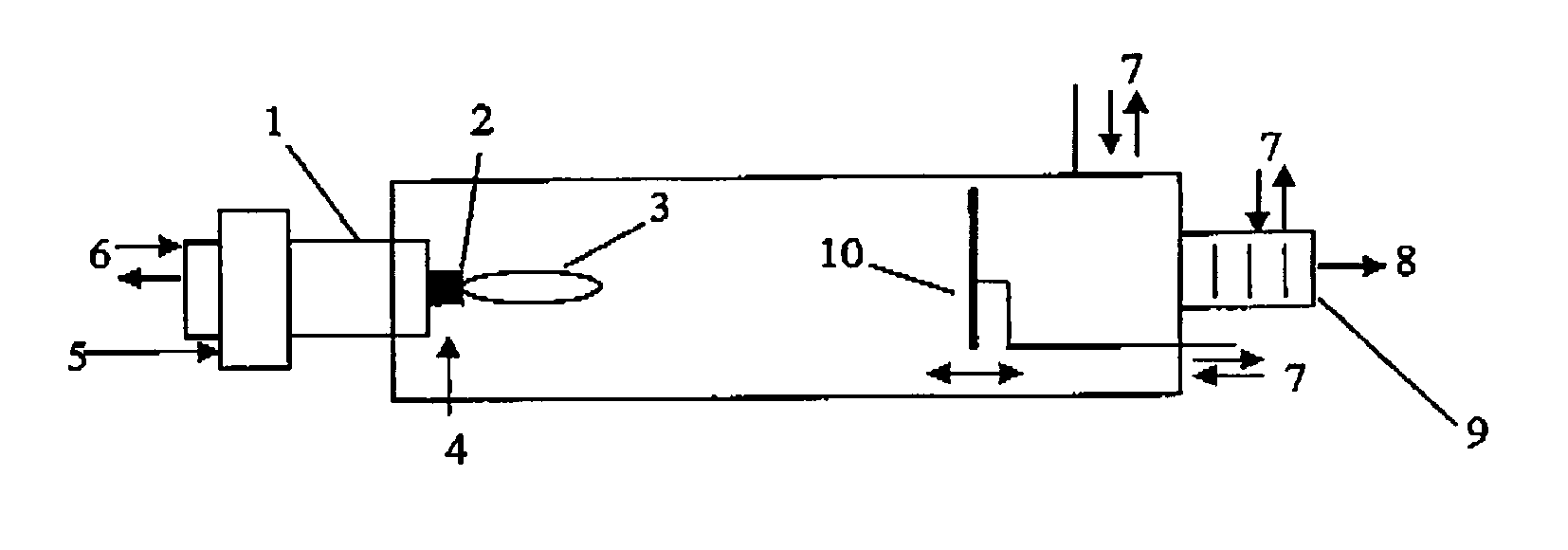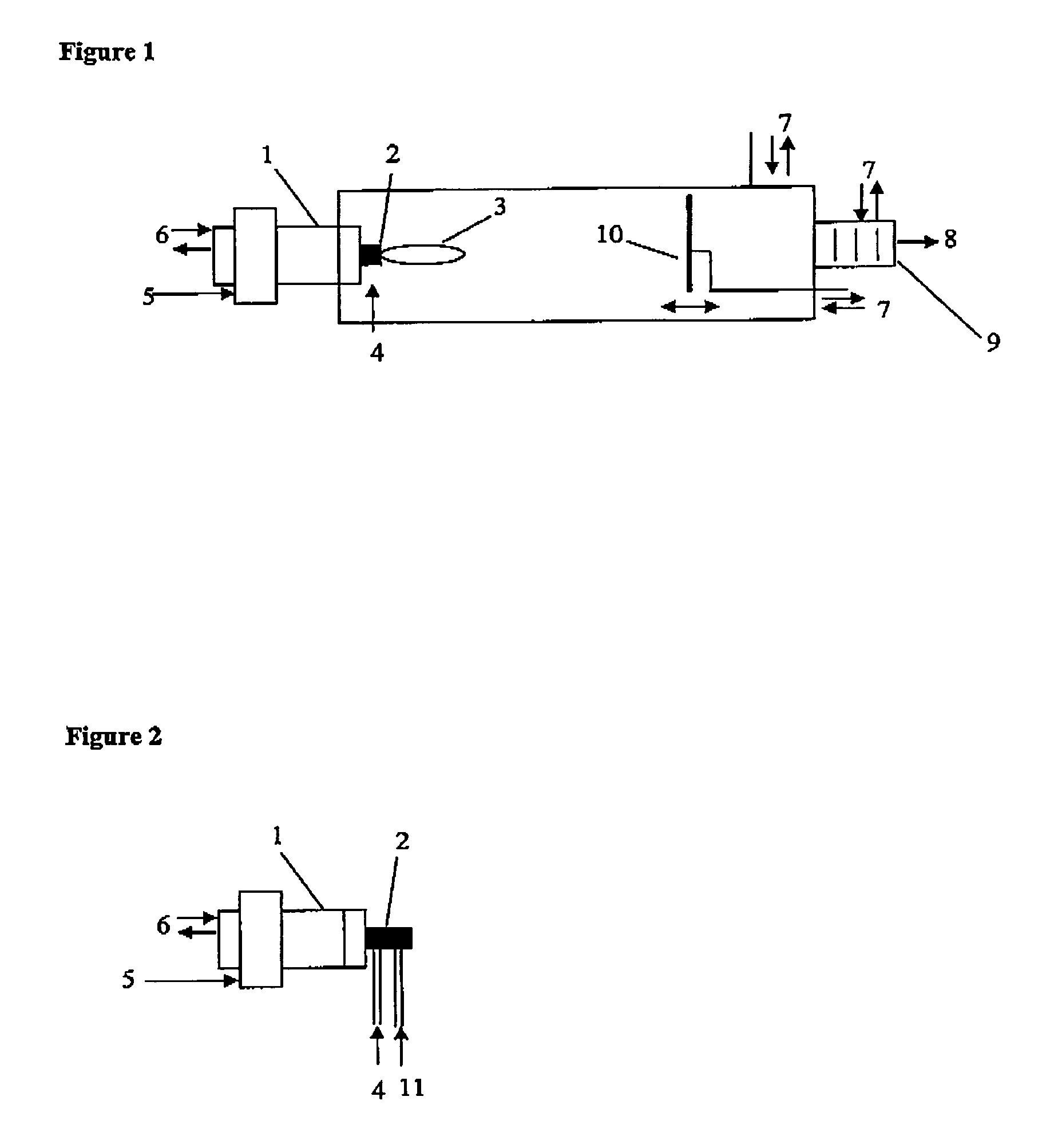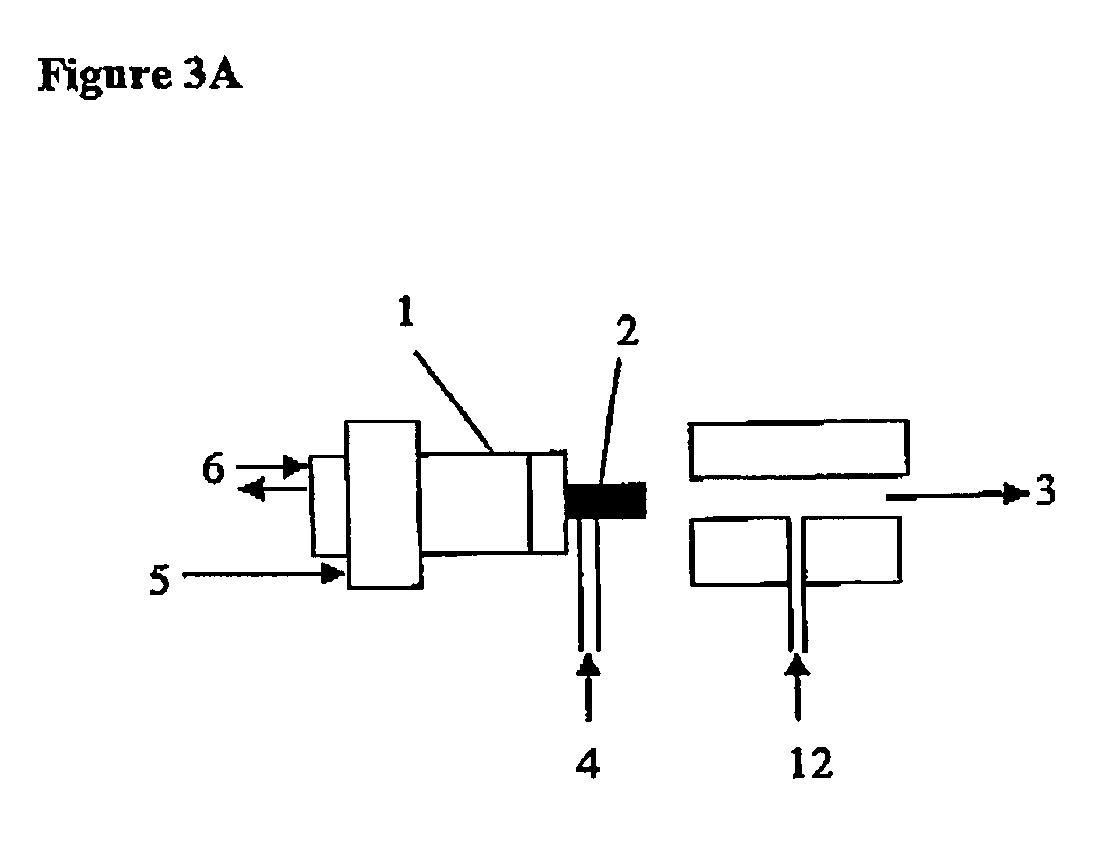Method for producing carbon nanotubes using a DC non-transferred thermal plasma torch
a technology of carbon nanotubes and plasma torch, which is applied in the direction of carbon compounds, inorganic chemistry, material nanotechnology, etc., can solve the problems of limited scale up possibility for large yields, rapid movement of materials to tons/month requirements, and demand for cnt, so as to add to the scale up potential
- Summary
- Abstract
- Description
- Claims
- Application Information
AI Technical Summary
Benefits of technology
Problems solved by technology
Method used
Image
Examples
Embodiment Construction
[0033]The present invention can involve the use of a plasma torch 1 as described in U.S. Pat. No. 5,147,998 on which a water-cooled nozzle assembly is added for carbon-containing gas injection. Typically, the material for the nozzle is tungsten when using tetrachloroethylene (TCE) as a carbon source gas. The electrodes used in the demonstration experiment were coated with tungsten, although electrode surfaces containing either Fe, Ni, Co, Cr, Mo, Pd, Pt, Ru, Rh, Hf and Gd should also show significant catalytic effects.
[0034]Using TCE as a carbon source gas, an evaporator 23 is used to transform the liquid TCE 22 (at room temperature) to a gas carried in heated lines at 200° C. with a helium or argon flow 19. Flowrates used are typically 20 standard liters per minute (slpm) of helium and 0.05 to 0.54 mol / min TCE. Higher power DC plasma torches or inductively coupled thermal plasma torches (TP-ICP) can provide the flexibility to inject the liquid TCE directly into the torch. In such c...
PUM
| Property | Measurement | Unit |
|---|---|---|
| diameter | aaaaa | aaaaa |
| pressure | aaaaa | aaaaa |
| temperature | aaaaa | aaaaa |
Abstract
Description
Claims
Application Information
 Login to View More
Login to View More - R&D
- Intellectual Property
- Life Sciences
- Materials
- Tech Scout
- Unparalleled Data Quality
- Higher Quality Content
- 60% Fewer Hallucinations
Browse by: Latest US Patents, China's latest patents, Technical Efficacy Thesaurus, Application Domain, Technology Topic, Popular Technical Reports.
© 2025 PatSnap. All rights reserved.Legal|Privacy policy|Modern Slavery Act Transparency Statement|Sitemap|About US| Contact US: help@patsnap.com



